Popular houseplants and garden ornamentals, tropical dracaena can benefit from the occasional light trim to the foliage to improve appearances, or more thorough pruning to resize overgrown plants.
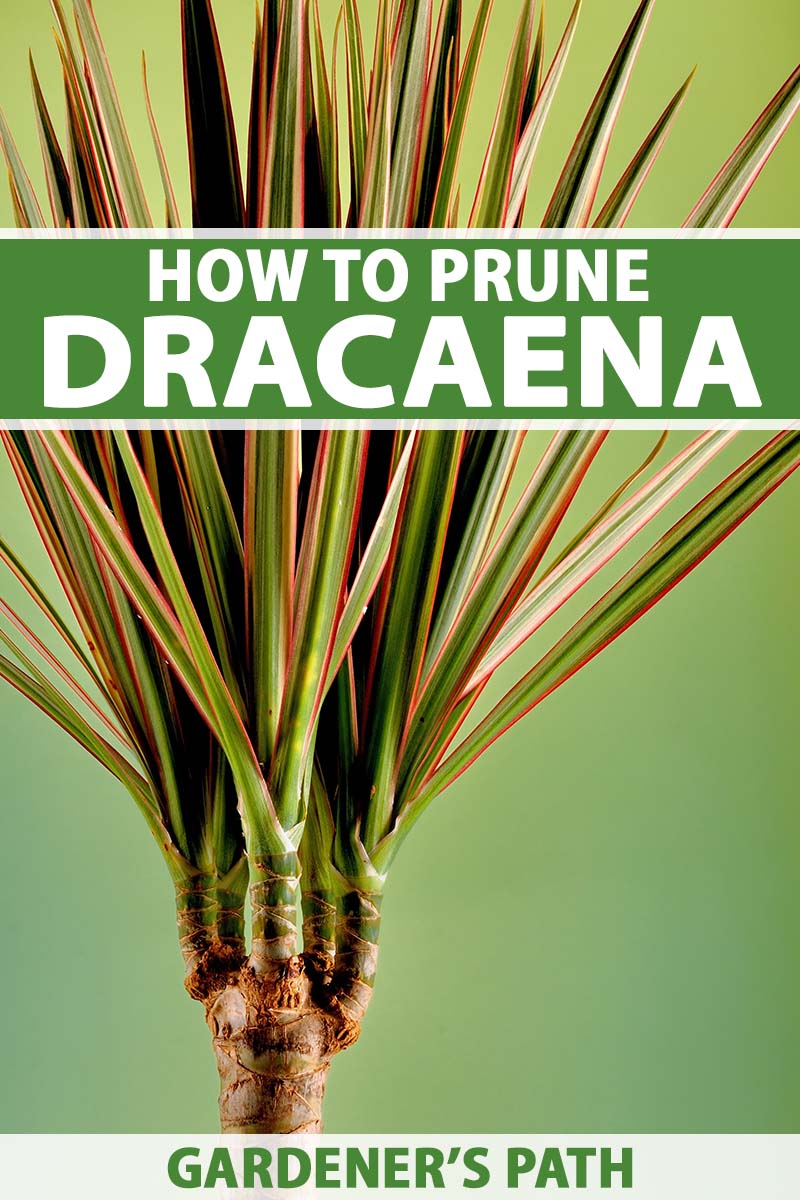
We link to vendors to help you find relevant products. If you buy from one of our links, we may earn a commission.
Various types feature lush and glossy canopies or stands of strappy foliage. And many have tree-like stems similar to palms.
You’re probably familiar already with several Dracaena species that commonly grace our homes and yards, such as the uniquely curled lucky bamboo (D. sanderiana), the stately, wide-leaf corn plant (D. fragrans), the dramatic, bi- or tricolored dragon tree (D. marginata), and the tall, palm-like garden spikes (D. indivisa).
Native to tropical regions, these cold-tender but sturdy plants are hardy only in USDA Zones 10 to 12, and are typically grown as houseplants.
In a cozy, protected home environment, many can reach up to 10 feet tall and eventually outgrow their location. Out in the garden, some may grow up to 20 feet.
Thankfully, dracaena responds well to pruning, and it’s easy to maintain a manageable size or tidy up the foliage.
So whether your dragon tree or spike plant needs just a light trim or major structural reshaping, join us for a look at how to prune dracaena in the home and garden!
Here’s everything we’ll cover up ahead to keep your plants looking their best:
What You’ll Learn
When to Prune
The process of pruning dracaena can range from a light edging to remove dead or dying foliage to a full beheading to reduce the size of large specimens.
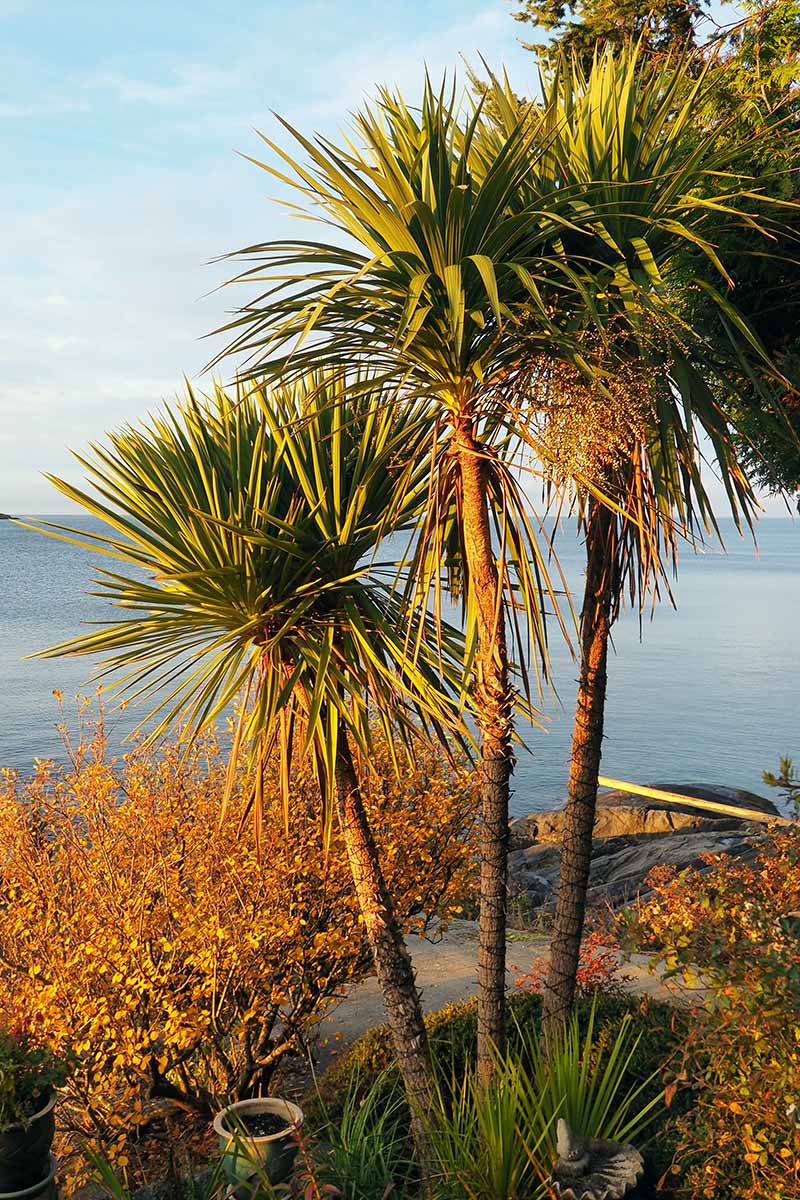
For either action, the ideal time to prune is when the plants are in their active growing season through spring and summer.
And it’s best to do any cutting earlier rather than later, to get the benefit of a full growing season to follow.
When possible, avoid pruning in autumn and winter when growth slows and plants are dormant.
Remove and Trim Leaves
To tidy plants and clean away brown, yellow, or dying leaves, you can remove them cleanly from the stem by hand.
First, cut or tear the leaf to reduce its length by half. Then tear the leaf lengthwise from the crosscut down to the stem, finishing with a firm tug to remove each section cleanly from the stem.
Leaves can also be removed close to the stem with clean, sharp scissors or garden shears. This usually leaves a short tab on the trunk which can easily be peeled off if left to dry for a few weeks first.

To remove brown or dead tips, rein in unruly growth, or create a more uniform appearance, trim the leaf tips to form a symmetrical arc, starting at the top then moving down the back, front, and sides.
Use clean, sharp scissors to trim the tips at an angle. Go easy and snip modestly to avoid the “oh no!” haircut look, removing tips in small, one- or two-inch sections only.
Step back a few feet between cuts to accurately assess the overall shape, then re-trim as needed for the most pleasing aesthetic.
For stemless varieties such as snake plants (D. trifasciata), remove dead or damaged leaves at the base or thin them with clean, sharp scissors.

Grasp the leaf top with one hand to hold it taut then cut horizontally across the bottom at the soil line.
To reduce their height, trim leaf tops at the desired height, cutting at an angle to maintain a natural shape.
When thinning or reducing, work from the outside perimeter and gradually move in, remembering to step back a couple of times to assess the shape as you go.
Stem Pruning
Stem pruning isn’t an annual event with dracaena, but a few situations warrant action.
When mature specimens outgrow their environment or become lanky, a careful topping can restore tall or gangly plants to a manageable size.
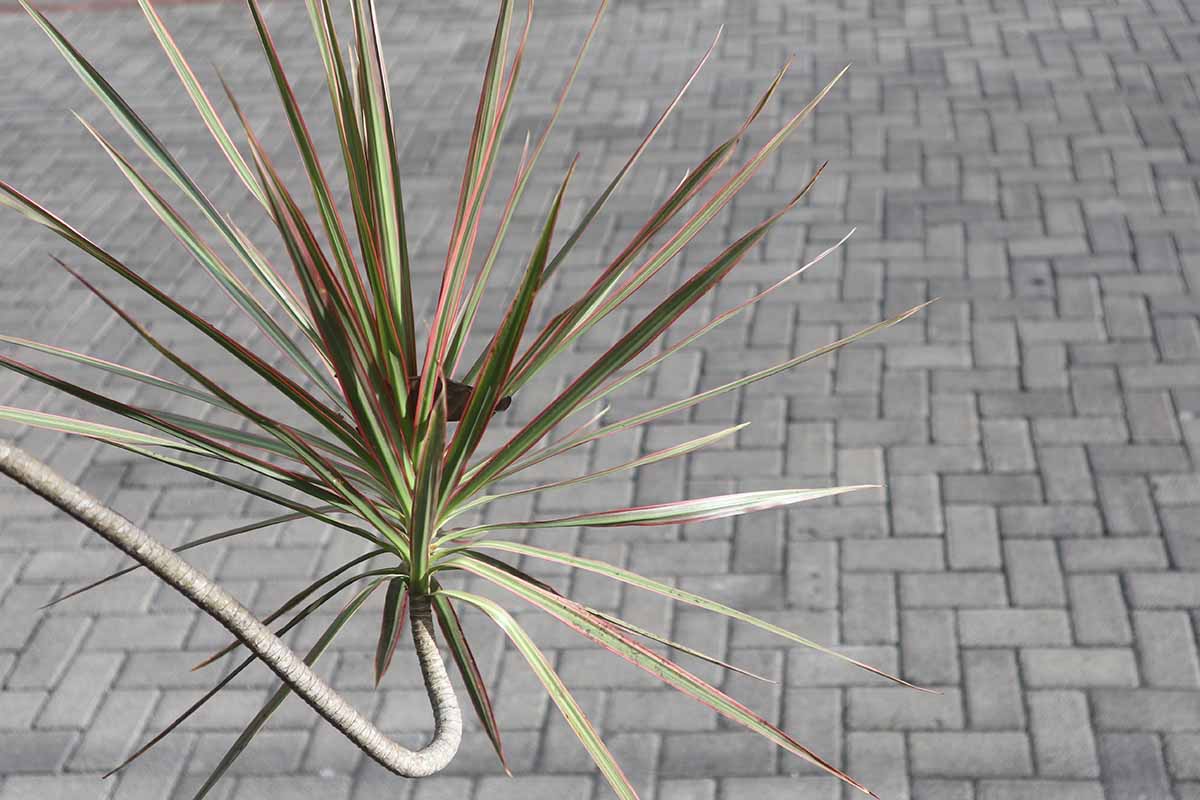
And over time, some species and cultivars can develop excessive dips, bends, or twists in the stems.
Cutting the stems back not only reduces their size, but it also promotes upright growth. And plants often branch just below the cut for a fantastic, full head of foliage.

To create a compact, bushy shape, cut the stem low, leaving a quarter of the stem’s overall length in place.
For specimens with a taller profile, make your cut at any desired height, removing between one-quarter and three-quarters of the total stem length.
Use clean, sharp garden snips to cut stems at a 45-degree angle – cutting on an angle helps reduce the available area that bugs, dust, and pathogens can land on, limiting the chances of infection or infestation.
Watch for buds of new growth to emerge below the cut in a few weeks.
To remove straggly side stems, cut them as close to the base as possible. If needed, use a clean boxcutter to trim away plant material right up to the stem to prevent regrowth.
But don’t throw away the stems you remove. They’re easily propagated to make new plants – and you can read all about it in our guide to propagating dracaena houseplants.
Outdoor Care
Outdoor specimens can be trimmed and pruned in the same manner as indoor plants.
You can use clean, sharp scissors or shears to trim tips, pull away dead leaves from the stem, and prune stems to manage growth and size.
However, for large specimens, you may need to employ a clean, sharp saw to cut through thick trunks.
Should your outdoor specimens suffer cold damage with a canopy collapse, cut stems back close to the ground in early spring.
But don’t remove the plants yet. Even if the topside is gone, chances are good that the roots have survived.
Watch for new growth to emerge around the base as the growing season progresses.

I’ve lost the tops of my 15- to 20-foot spike plants (D. indivisa) three times in 25 years, and they always grow back!
If no new growth appears by midsummer, plants are most likely dead and can be dug out.
A Touch of the Tropics
Easy to grow and cultivate, graceful dracaenas add an alluring touch of the tropics to homes and gardens – and they respond well to a light trim or a hard prune.
Remember to trim the foliage lightly for a tidy or uniform shape – or lop the top off with a stem pruning for a completely new look!
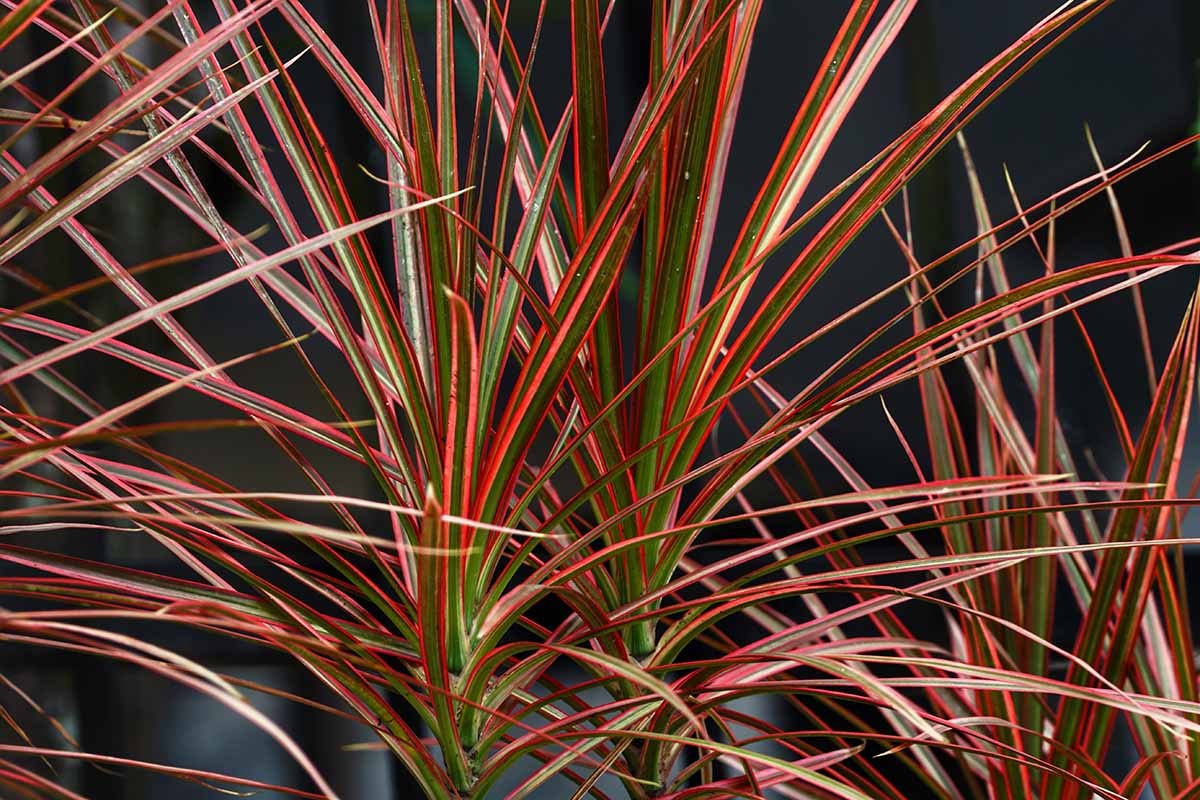
For the best results, prune during the growing season to quickly establish new growth and lush foliage.
Are you ready to prune your dracaena? If you have any questions, drop us a line in the comments section below.
And for more dracaena know-how, be sure to read these articles next.
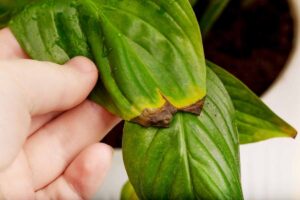
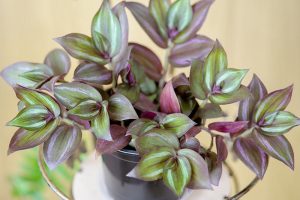
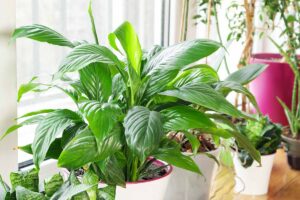
Thank you for the information.
You’re wecome renata!
Thank you!
Glad you like it Laura!
I have 2 dracaena spike plants outdoors in large pots. 1 has come up beautifully, the other is laying flat with a few healthy looking leaves. Should I wait and see what happens, or just buy a new one.
Hi Cheryl, it sounds like the one plant had its growing tip nipped by cold weather, but that doesn’t mean the roots are dead.
Wait and see for another month – if no new shoots emerge by the start of June it probably needs to be replaced.
Thanks for asking.
We have planted a row of rainbow dracaena plants that are clumped in groups of three across the outdoor of our front wall at our home in Hawaii. They have grown tall over the last year and a half since planting, reaching the desired height for the area.
I’m still unclear on how to exactly trim the trunks of these so that we can get multiple heads growing off of one stalk, making the plant bushier and filling out the space with colorful heads instead of a bunch or stringy stalks. Could you please instruct me on the procedure?
Hey Terry, thanks for including a photo! The steps are outlined in the Stem Pruning section above – here’s how I would handle your plants. First, leave the four short specimens alone for now and wait to prune them until they grow as tall as the others are now. For the tall plants, in early spring use clean, sharp shears to cut the stems on a 45° angle. You can cut the stems at any height, but for branching, don’t remove more than three-quarters of the stem length. I would cut them so they’re roughly as tall as the middle… Read more »